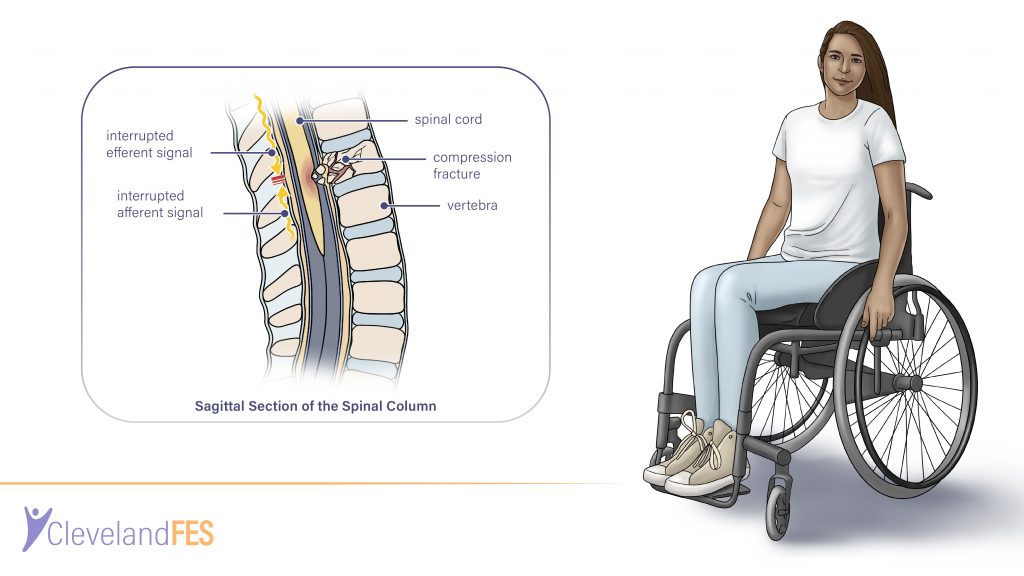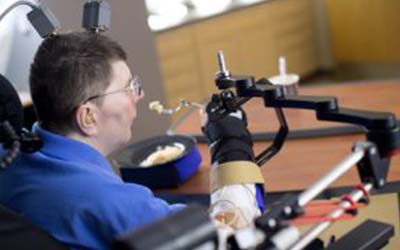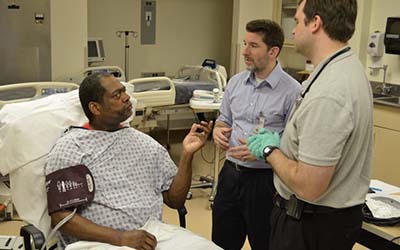Damage to the spinal cord, to the nerves in the spinal canal, or to surrounding anatomy (such as a vertebra, as shown below) can result in a spinal cord injury (SCI). The parts of the body controlled by the spinal cord at and below the level of the injury are affected. Paralysis or partial loss of movement can occur, along with loss of sensation, changes in reflex activity, and pain.

SCI Programs Overview
At present, damage to the spinal cord cannot be fully repaired but it can be by-passed. By applying a small electrical impulse to the nerve or muscle, the desired function can be triggered.
Stimulating the correct muscles can make a person’s arm or leg move, while stimulation to the bladder or diaphragm can return bodily functions. Using electricity to stimulate and control a part of the body is known as Functional Electrical Stimulation or FES. Over the past three decades of research, FES has advanced and can now be used to help people with spinal cord injury to move their arms or legs, control their bowel and bladder, treat or prevent pressure sores, and support pelvic health. It can exercise muscles for greater strength and tone and improve circulation.





